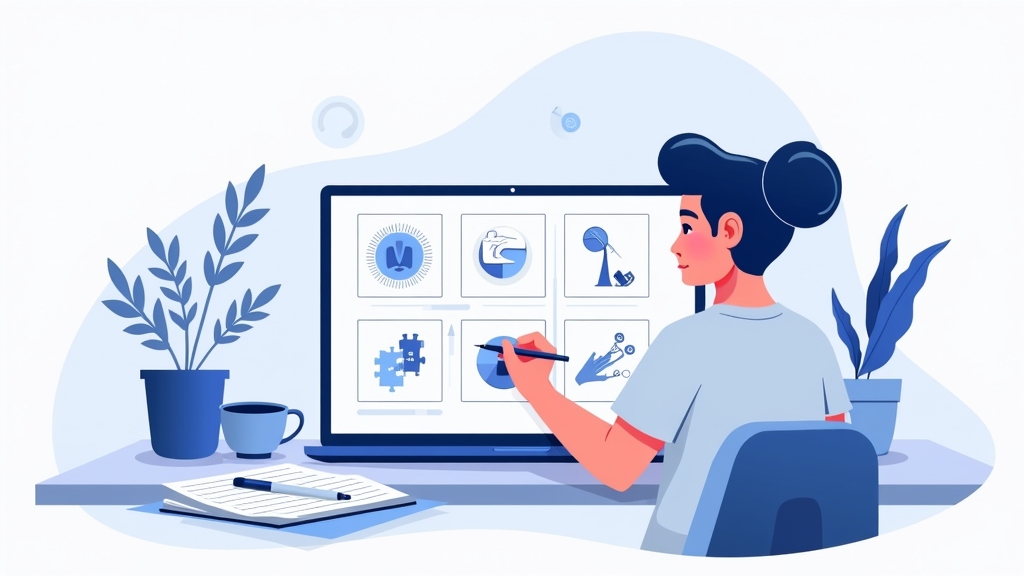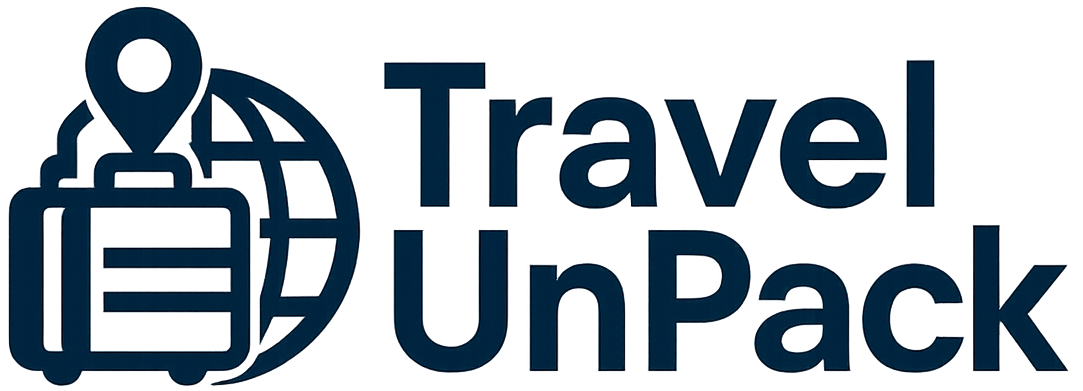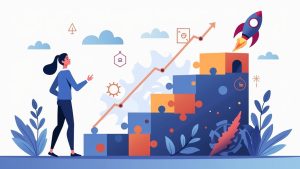How to Use Personal SWOT Analysis to Leverage Your Career and Invest in Education
Have you ever thought about why some people seem to advance in their careers more easily than others? Often, the secret lies in self-knowledge and the ability to identify growth opportunities strategically. A powerful tool for this is personal SWOT analysisThis methodology was originally created for business, but can be adapted for professional development. In this article, you'll learn how to apply this methodology to target your investments in education and achieve your career goals.
What SWOT Analysis Is and How It Can Be Applied Personally
SWOT analysis is a strategic planning tool that evaluates four pillars: Strengths, Weaknesses, Opportunities and Threats. In the personal context, it helps to map out your abilities, limitations, possibilities for growth and risks that could hinder your progress.
Imagine, for example, that you are a marketing professional with excellent creative skills (strength), but you have difficulty analyzing data (weakness). At the same time, you realize that your company is investing in business intelligence courses (opportunity), but there is internal competition for promotions (threat). This diagnosis allows you to act more assertively.
Applying a personal SWOT doesn't require complex tools. All you need is a sheet of paper divided into four quadrants or even a digital document. The important thing is to be honest with yourself. Are you willing to face up to your vulnerabilities in order to turn them into advantages?
To get started, I recommend this practical guide from the Harvard Business Review on personal SWOT analysis: Harvard Business Review. It provides valuable insights into how to structure your self-assessment.
Identifying Your Strengths: What Do You Do Best?
Every professional has skills that stand out, but often they are not fully recognized. Their forces are the foundations of your career - what you do with mastery and what can set you apart in the marketplace.
Ask yourself: What tasks do you perform with ease? It could be your leadership skills, your ability to resolve conflicts or even your time management efficiency. List everything. For example, a teacher's strength might be their exceptional teaching, while an engineer might excel at innovative technical solutions.
A valuable tip is to ask colleagues, superiors or mentors for feedback. Sometimes we only see part of our potential. Have you ever thought about how many underestimated skills you carry?
In addition, tools such as the StrengthsFinder test can help identify your strengths. Find out more here: Gallup StrengthsFinder.
Recognizing Your Weaknesses: Where Do You Need to Improve?
Just like forces weaknesses are a fundamental part of SWOT. They represent areas that require development, whether due to a lack of knowledge, experience or natural aptitude.
For example, an IT professional may be excellent at programming but have difficulties with interpersonal communication, which limits their chances of taking on management positions. Can you identify anything similar in your career?
The key here is not to criticize yourself, but to see these gaps as learning opportunities. Courses, mentoring and even books can help overcome these barriers. Platforms such as Coursera offer training in a variety of areas: Coursera.
Remember: recognizing a weakness is not a sign of failure, but of professional maturity. What is the first step you can take today to work in one of them?
Exploring Opportunities: Where Can You Grow?
The opportunities are external factors that you can take advantage of to boost your career. They can arise from market trends, changes in the company where you work or even professional connections.
Suppose you work in the health sector and notice a growth in demand for telemedicine. This could be an opportunity to specialize in this segment. Are you keeping up with the changes in your sector?

Another example: if your organization is encouraging certifications, why not sign up? Many companies even pay for courses for employees. Keep an eye out for internal calls for proposals and development programs.
To keep up to date, sites like LinkedIn Learning offer courses in line with market needs: LinkedIn Learning.
Anticipating Threats: What Could Hinder Your Progress?
The threats are external obstacles that can hinder your growth. They can come from economic crises, fierce competition or even technological changes that make your skills obsolete.
A graphic designer, for example, could face threats with the advance of AI tools that automate some of the creative work. How would you prepare for this?
The solution lies in adaptation. If a technology is replacing manual tasks, invest in learning how to use it to your advantage. Keep abreast of trends and build a solid network of contacts to protect yourself from instability.
To better understand how the future of work is shaping up, take a look at this report by the World Economic Forum: World Economic Forum.
Creating an Action Plan Based on Your SWOT
There's no point in doing the analysis if you don't turn it into concrete actions. Based on the insights gained, set realistic targets and deadlines for working on each point.
If one of your weaknesses is English, for example, set up a study plan with a timetable. If an opportunity is a certification on the rise, research institutions and set aside a budget. What will be your first goal after reading this article?
Tools like Trello or Notion can help you organize your plan: Trello e Notion.
Targeting Your Education Investments Strategically
Now that you've mapped out your needs and opportunities, it's time to prioritize where to invest in education. Not every course or certification will bring the same return - focus on what aligns your strengths with the demands of the market.
For example, if you are a financial analyst with an interest in sustainability, a course in ESG (Environmental, Social, and Governance) could be a plus. Have you researched which skills are in demand in your area?
Sites like Glassdoor show the skills most valued by companies: Glassdoor.
Remember: education is an investment, not an expense. What will you do today to ensure a brighter tomorrow?
Conclusion: Turn self-knowledge into action
A personal SWOT analysis is more than a reflection exercise - it's a map to guide your professional decisions. By identifying strengths, weaknesses, opportunities and threats, you gain the clarity to invest intelligently in education and boost your career.
So, are you ready to put this into practice? Grab a piece of paper, start your analysis and take the first step towards growth. The professional future you want is closer than you think.



